Fishing is a great way to pass the time, challenge yourself, and put food on the table. There are a variety of methods, species, and locations where you can fish, each with its own set of gear, challenges, tips, and tricks.

If you already know what you want to know, use our table of contents to go directly to the section you need. Otherwise, enjoy our fishing overview.
Fishing Basics
Fishing is the act of catching fish. Whether you do it with your hands, net, a bow, or a traditional fishing rod, it is an activity many enjoy.
Some fishers enjoy the sport and release the fish back into the water after a catch. Others prefer to keep and eat their haul. If you’re a fishing novice or simply want to hone your skills, we have the answers you need.
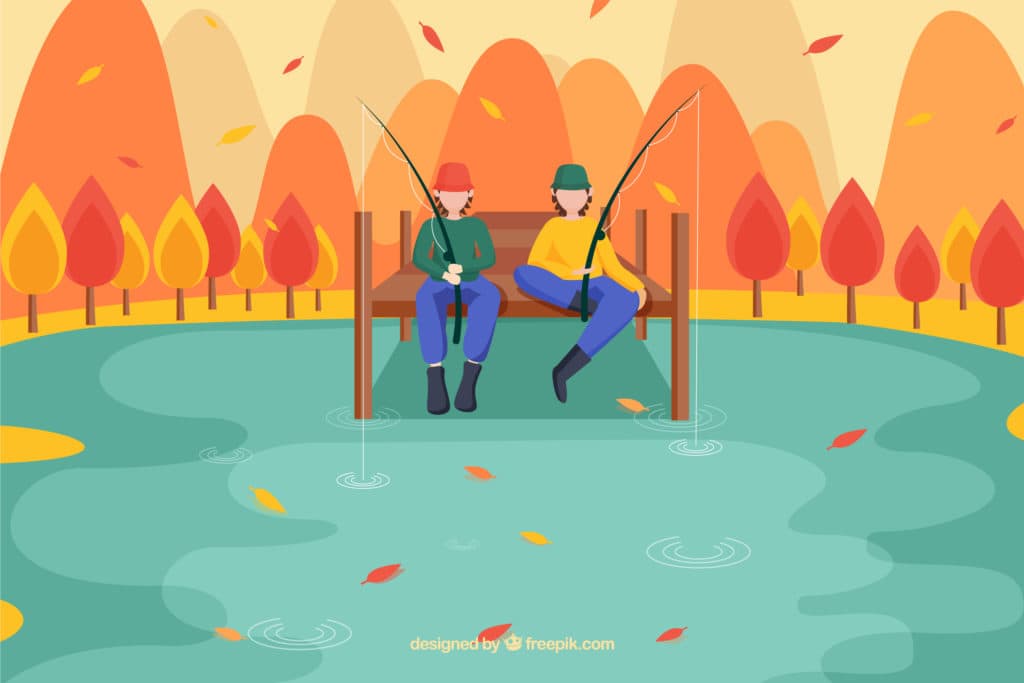
Fishing Requirements
If you’ve never fished before or have only tagged along with others, you may be wondering what you need to get started. It’s not just as simple as picking up a pole and heading out. You’ll need to be prepared with certain items before you venture out.
Fishing License
With protected species, lands, and limits, you need to know where you can fish and fishing licenses are generally required for all of them. This protects the ecosystem and ensures the fish continue to reproduce. Check with your city, county, or state for licensing requirements and restrictions.
Fishing Gear
If you are going to fish, there are some vital items you will need. In addition to your license, you’ll need the following:
- Fishing rod and reel
- Fishing line
- Hooks
- Bait or lures
- Bobbers
- Optional accessories: tackle bag or box, pliers, fishing net, boots, waders
Of course, this is a basic list and there are a wide variety of types in each category as well as a near-endless number of other fishing gear for every species and skill level. Once you get started, you can do research into additional supplies you’ll need.
Where to Fish
Fishing can be done in almost any body of water from lakes and rivers to oceans and many reservoirs.
Where you live will determine the best fishing spots. There are many resources online to find the best fishing spots near you.
Lakes and rivers are a good place to start.

Know What You’re Fishing For
Different species of fish are attracted to a variety of bait and lures. You’ll need to know what type of fish you are targeting in order to properly bait your hook.
Most Common Types of Fish to Catch
Here are some of the most popular freshwater fish species to fish for:
Bass
Bass are highly sporty fish. Many bass tournaments exist to show your fishing skills. This species goes after small fish, crayfish, insects, and insect larva.
Crappie
These fish are most attracted to live minnows or jigs. Trolling is a popular method of catching this type.
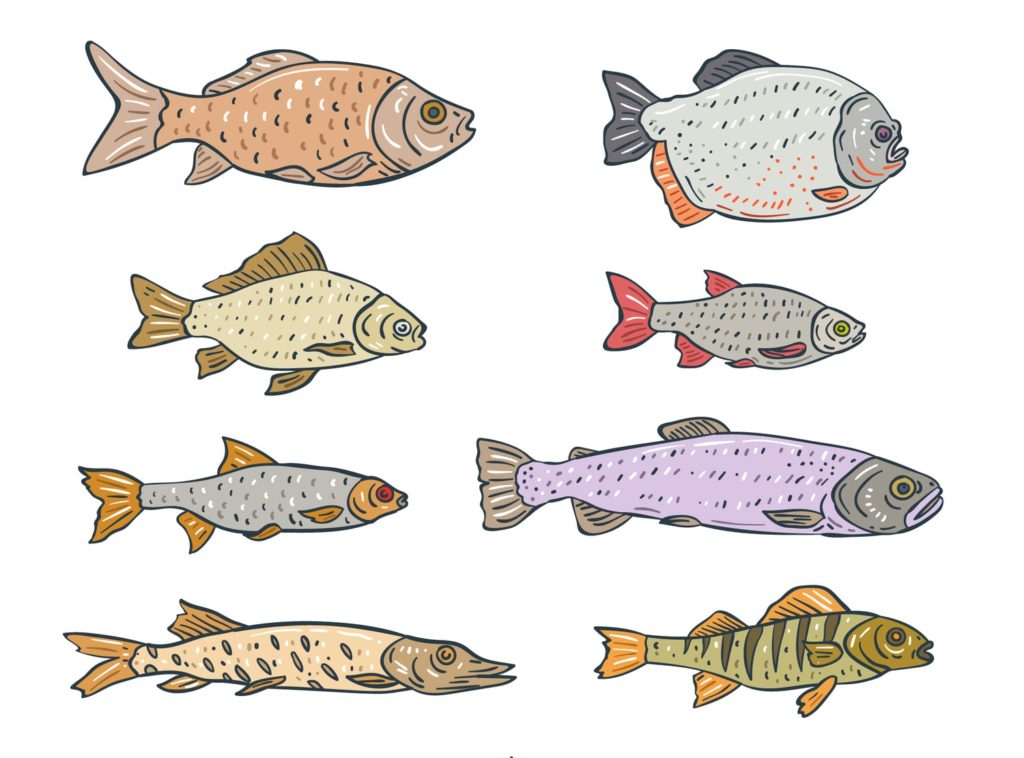
Panfish
Yellow perch, redear sunfish, rock bass, bluegill, and other sunfish are in this category. Minnows, worms, crickets, and crayfish are favorite bait for these fish.
Catfish
Catfish are versatile in what they eat. It is said you can basically choose anything from your refrigerator and they’ll love it. They also enjoy commercial baits such as shad, minnows, worms, and stink bait.
Trout
These popular fish chase worms, crickets, grasshoppers, bait fish, crayfish, and larva.
Doing some research before heading out will help ensure the type of fish you are looking for will be attracted to your bait and ensure you a good catch.
Must-Have Fishing Gear
As mentioned before, there are some things you can’t leave behind when heading out on a fishing trip.
Fishing Rod and Reel
There are a variety of rod and reels you can get. You can also choose a combo that has both or purchase each separately. Getting a combo requires less work and you can be certain they complement one another.
The benefit of choosing each gives you control over your rig and can be customized to your preferred fish species. You will find many types of both rods and reels, such as:
- Spinning
- Trolling
- Baitcasting
- Spincast
- Fly
Fishing Line
The two most common types of fishing lines are monofilament and braided lines. You’ll need to choose your line depending on your rod/reel and target species.

Hooks
Fishing hooks have various points, eyes, barbs/barbless, sizes, and of course, types. Be sure you have the right size and type for your fish type and size to ensure success.
Bait or Lures
Fish chase different types of bait. Some can be fooled by reusable lures and others will only pursue live bait.
Plugs, jigs, spinnerbait, spoons, plastics, and flies are categories of lures, while bait can range from bug larva to worms, other fish, shellfish, and even food you can bring from your refrigerator. The color of your lure can make or break your fishing trip.
Bobbers
To keep your line straight and keep track of it, you’ll need a bobber. Two overall types of bobbers are available: fixed and slip versions.
Sinkers
Many sizes, shapes, and weights of sinkers exist to ensure your hook makes it down low enough to entice your prey.
Bucket/Cooler
If you are planning to bring your fish home, you’ll need a bucket or cooler to keep them fresh until you can properly clean and store them.
Tackle Box or Backpack
With all this equipment, you will need a way to carry and organize it all.
These are the basics you’ll need when going fishing. Be sure to do your research to be sure you have what you need to catch what you are targeting.
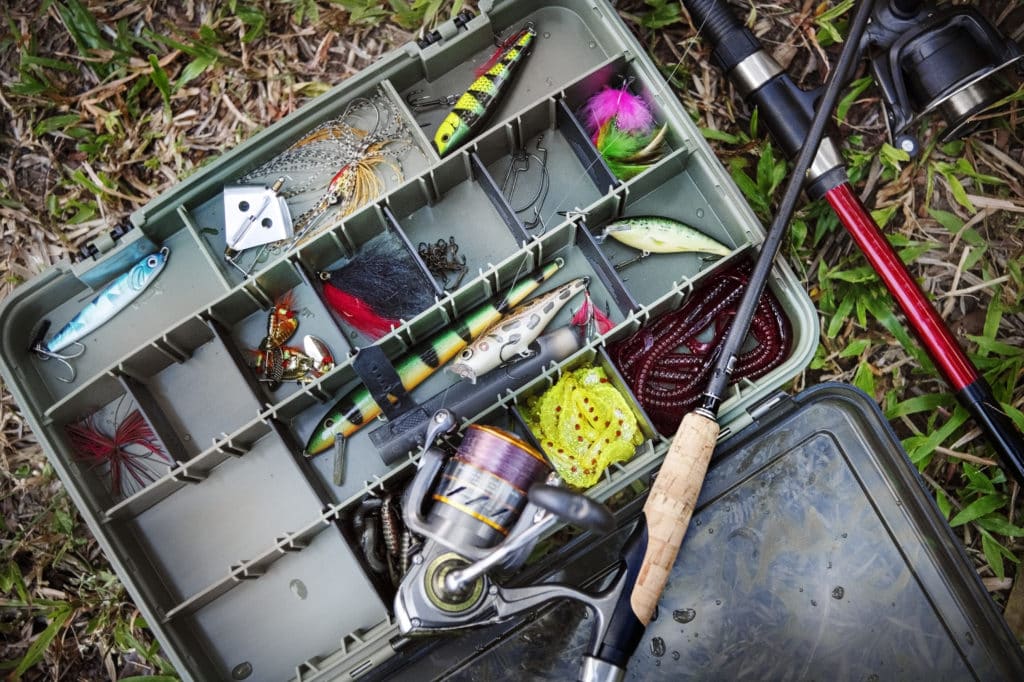
Fishing Types
Fishing methods or types abound. There are various ways to cast and catch even the most elusive fish.
Types of Fishing
Here are some types of fishing to consider. All of these have a learning curve and technique you’ll need to learn and practice in order to be successful.
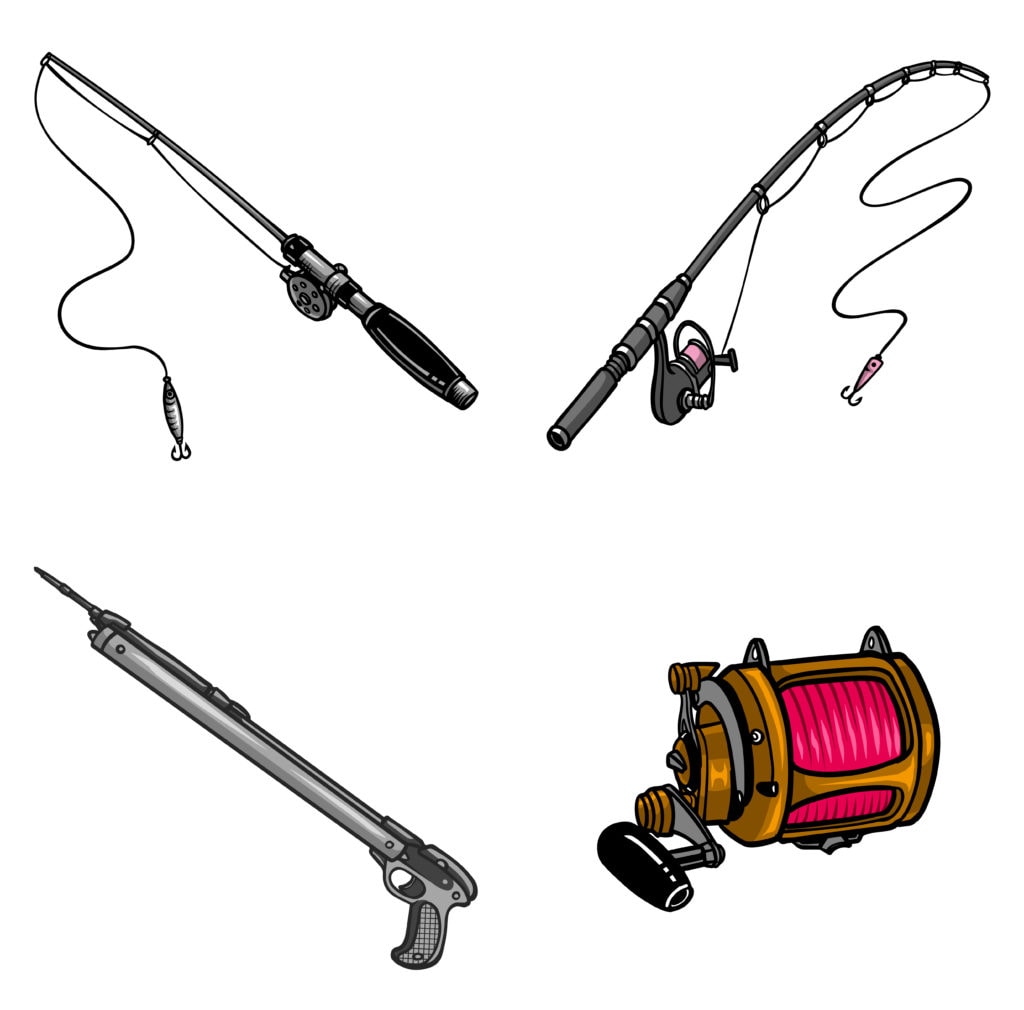
- Trolling involves dragging bait or a lure behind a boat at various speeds and depths to target specific fish types.
- Baitcasting – This is where the reel is attached to the top of the rod. This type uses a handle that is rotated to spool the line.
- Fly Fishing – Using a very light “fly”, the line is cast out and does not sink far into the water. These use an open reel instead of more traditional closed reels.
- Ice – Ice fishing involves dropping a line down a hole in the ice. There is no casting necessary.
- Spinning – A spinning reel is attached to the bottom of the reel and a bail arm rotates around the spool in order to spool the line.
- Spearfishing – This is hunting fish underwater with a speargun or pole spear. A rope is generally attached to make retrieval easier.
Conclusion
Fishing is fun, challenging, and can provide hours of entertainment. With the many methods, equipment, and types, you’ll never run out of ways to up your fishing game. For added difficulty, you can even try bowfishing or spearfishing. Or switch to surf fishing or trolling.
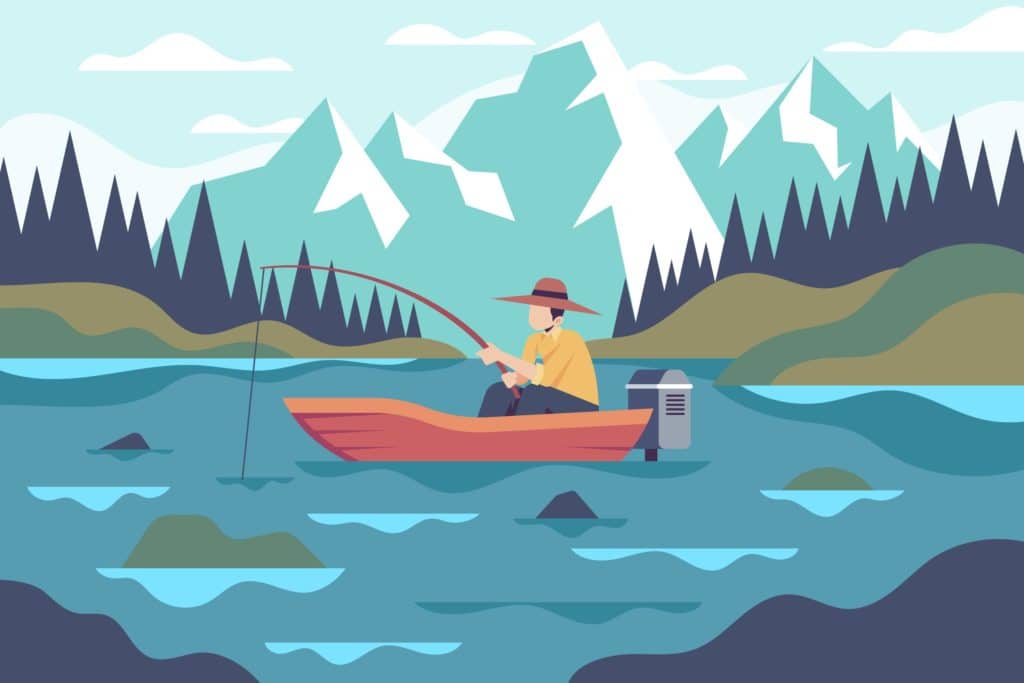
You can make your fishing adventure as involved or simple as you’d like. So many helpful devices like fish finders, thermometers, GoPros, and GPS are available so no fishing type or location is out of reach.

Big Game Logic is a participant in the Amazon Services LLC Associates Program, an affiliate advertising program designed to provide a means for us to earn fees by linking to Amazon.com and affiliated sites. Pages on this site may include affiliate links to Amazon and its affiliate sites on which the owner of this website will make a referral commission

